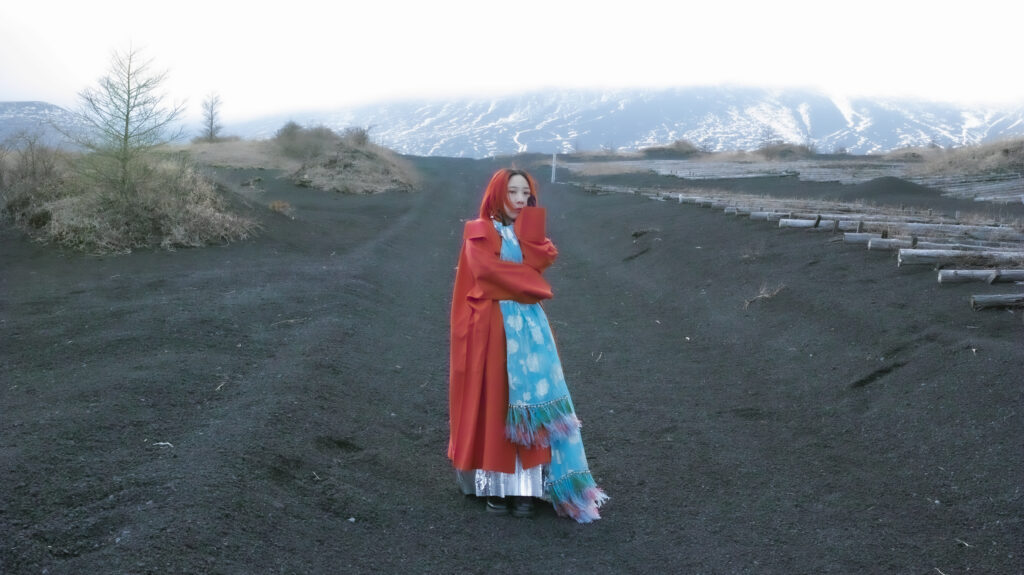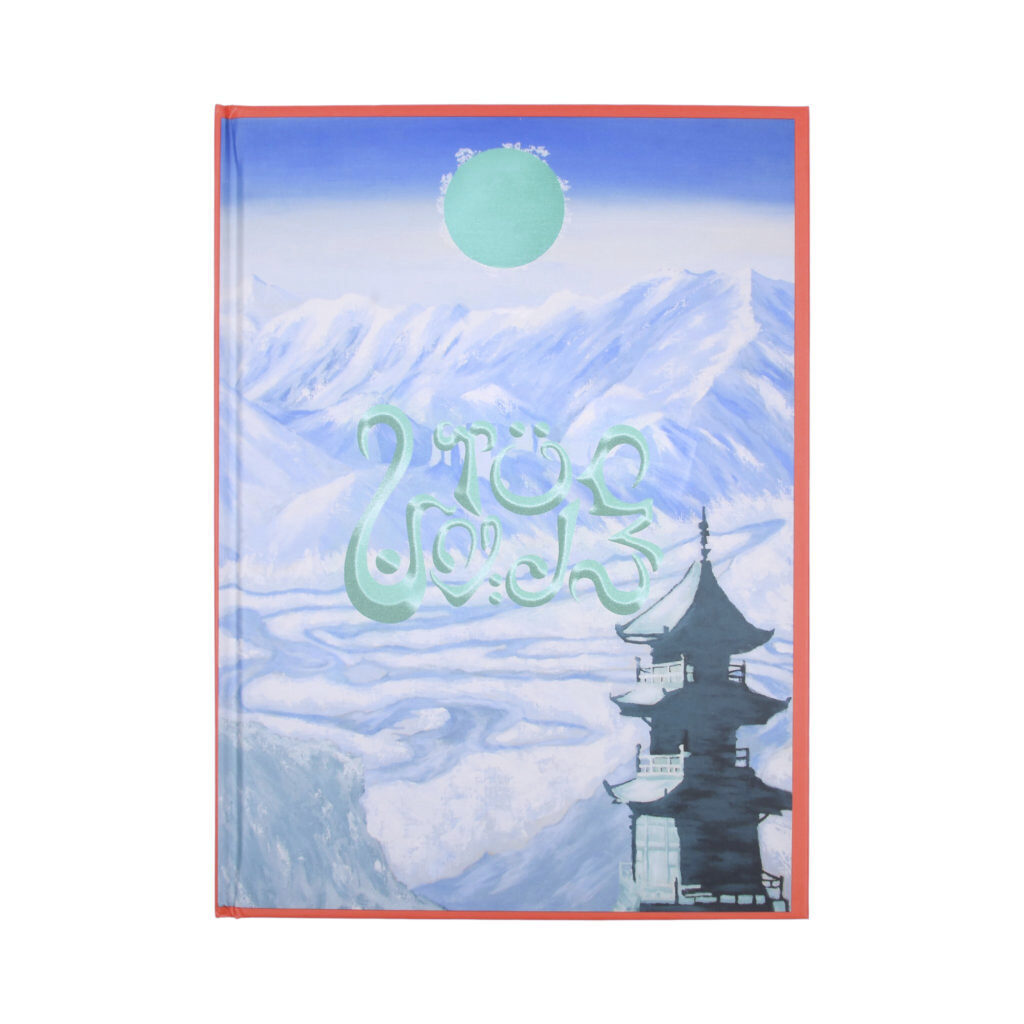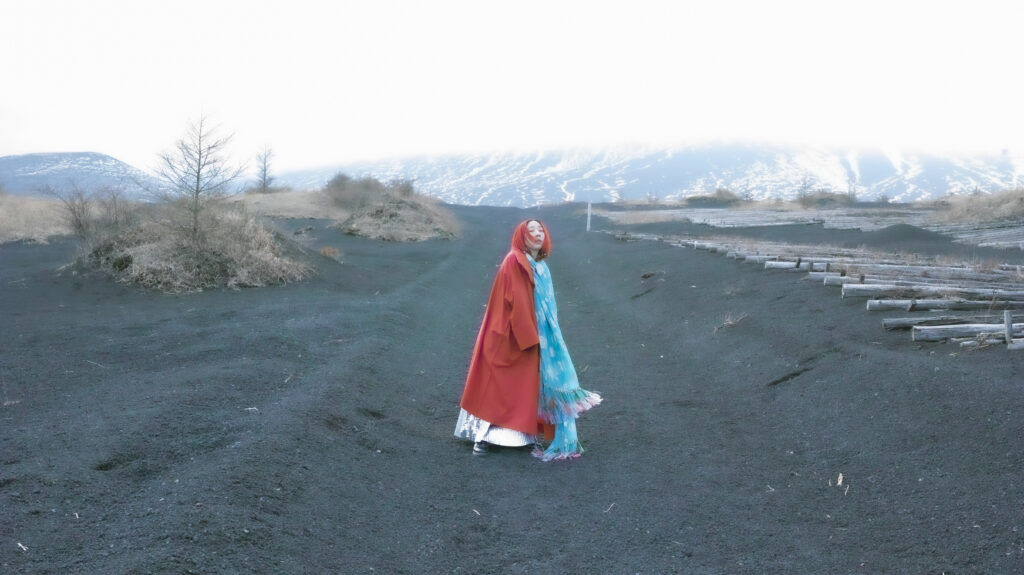A steel drum player who supports various artists and projects with her exceptional power of expression, and a musician who owns the label, BINDIVIDUAL—that is Utena Kobayashi. Recently, the artist who also leads electronica units—Black Boboi and MIDI Provocateur—had finished making her first solo album in five years. The latest album titled 6 roads, is made under the concept, ‘Hymn of Life’; it is a concept album that spins a tale together with the three EPs released prior to the album. The masterpiece is also available on CD, which comes with a picture book that tells the story through visual images. We immediately grasped the opportunity to speak to Kobayashi to learn more about the background and the genesis of the album 6 roads, and the immense talent protruded from her as artist Utena Kobayashi.
The reason why the album was released with a picture book and the sentiments embodied in the title
――I finally understood the concept of the album after reading the picture book. I was able to finally unravel the mysteries of the three EPs released prior to the album.
Kobayashi: Ah, I’m extremely happy to hear so—since, ‘mystery solving’ is something I wanted to do with this album.
――What do you mean by that?
Kobayashi: Until I made this album, I couldn’t decide on how I should release my own music. Although it is now a streaming era, I didn’t want my music to be merely put out digitally, and fundamentally, it had to be an ‘opus.’ While I was trying to figure things out, I read the manga, ONE PIECE, and it hit me: I should create a story and set up and pay off the foreshadowing. This is something that cannot be done solely with music, and I thought that I can work it out by adding pictures and words to the music, forging a close bond between music and the story. That was the idea that led to release the album with a picture book.
――How did the story of the album come about? It seems like the title, 6 roads, comes from the Buddhist word, ‘Rokudou-Rinne (six realms of samsara.)’
Kobayashi: That’s right. The point is that there are seven songs contained in the album. Ultimately, I think Rokudou-Rinne suggests, “living well for the next life,” however, I strongly think like, “wouldn’t it be better to enjoy the present life to the fullest?” [laughs]. I want to embrace the bourne that Rokudou-Rinne proposes— “aiming for a better way of living”—yet I want it for the present life and not for the next life. So, if the seventh world after gaining release from Rokudou-Rinne is the land of bliss, I thought, the seventh world in this album should be ‘now.’ That’s my take on 6 roads.
――The message relating to what you just said can be seen on the last page of the picture book.
Kobayashi: The message conveys a sense of self-discipline. You know, people have a proclivity to think, “we have to aim higher.” We were trained to think that way since we were kids through contests and exams that we all went through without questioning; maybe it’s like a systematic structure that people can’t get away with. But I think it’s rather more important to gain knowledge, understand my neighbor, and let ourselves ooze out to enlarge the ‘circle.’
――How did you nurture your perspective on both life and death?
Kobayashi: I’m not sure…. Maybe I still haven’t been able to confront death. For example, when my grandfather passed away, I couldn’t make it to his funeral because I had a gig that day. I’ve never went back home for Obon holiday to offer incense in memory of my grandfather since I’m the type of person who thinks like, “if I can remember him (my grandfather) at any time, wouldn’t that be good enough?” However, I’m afraid of death. When I was little, every time I did tarot reading, I always drew a card that read about death. I was always thinking, “why does my life have to do with death all the time?” But I personally think I’m more conscious of ‘life’ than ‘death’.
――In fact, your latest album portrays a story about ‘life’.
Kobayashi: Yes, that’s right. I’d been making music under the theme, “Ambitious suffering/Laughing and crying at the same time”—or basically cheer songs to pump myself up. It’s sort of like telling myself, “Kobayashi, let’s keep it up for tomorrow” and my solo project has had a certain self-healing aspect. But now, I’d say one step is behind me after putting out four releases. This time, I came up with a story and focused on elaborating it, so there is not a single element of self-healing, and I feel like I’ve been able to make pure music.
The production background of the new album and the philosophy of the creation
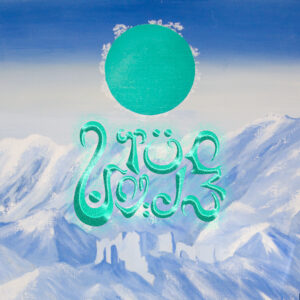
――The significance of this album is that almost all the songs are performed and written by yourself, as well as the visual is created by the designer, semimarrow. Was that—collaborating with an artist instead of a musician—something you wanted to do now?
Kobayashi: Yes. It’s indeed fun creating something together with someone, and maybe, I’m still regretting about not having been able to enjoy school festivals in my youth [laughs]. I actually like working with others toward the same goal and exchanging ideas to make an event happen together; in fact, I have this gutsy spirit of an athlete especially when it comes to playing an instrument. I’m always like, “Let’s practice more!” [laughs]. Regarding my solo project, I’d been overthinking about it, but now I’m realizing that I should simply enjoy.
――The beginning of the story of the picture book is set in the year of 2020. Is this influenced by the recent social situation?
Kobayashi: I was impacted by Covid only for the first song, “fai,” in the EP, Fenghuang. The story entails some of my personal experiences and portrays a person’s life from birth to death—so, regarding the timeframe of the story, I did set the beginning in the year 2020, but I’m not that adhered to it. And about society, hmm…? Maybe, it came to my attention when I was online gaming. Through online video games, I’ve became friends with people who I’ve even never met in person and that was a huge thing for me.
――With that being said, the story does have this RPG-ish vibe. Personally, it reminded me of something like Final Fantasy.
Kobayashi: Wow! I don’t play RPG games at all, but I’m happy to hear that. Someone told me that it’s likeThe Legend of Zelda.
――How were the characters in the story created? Especially the ‘young girl’ seems to be mirroring your outlook and ways of thinking.
Kobayashi: Ah, did you notice? That ‘young girl’ is the embodiment of myself, however, essentially, I didn’t want to call her a ‘young girl’. When we had to translate the story into English, we needed a subject pronoun, so we’ve made her a ‘young girl’—but I guess people can tell [that the character represents me.]
――In your songs, it seems like you use words coined by yourself. Did you ever think about complementing the album’s story with lyrics?
Kobayashi: I simply use my voice as a voice. I definitely think in pop songs, the words in lyrics need to make sense, but I’m the type who thinks that if I want to deliver words, then I should write a poem—so, I take music and lyrics separately.
――So, you don’t listen to pop music much?
Kobayashi: When I was in elementary, middle, and high school, I used to lend and borrow CDs and listened to pop music on a reg; I also watched MTV a lot. When I started studying music in university, I got into metal, progressive, religious and ethnic music. Later, I became obsessed with noise music and started thinking, “do we really need melodies?”—It was getting dangerous [laughs]. But I pulled myself back, and here I am.
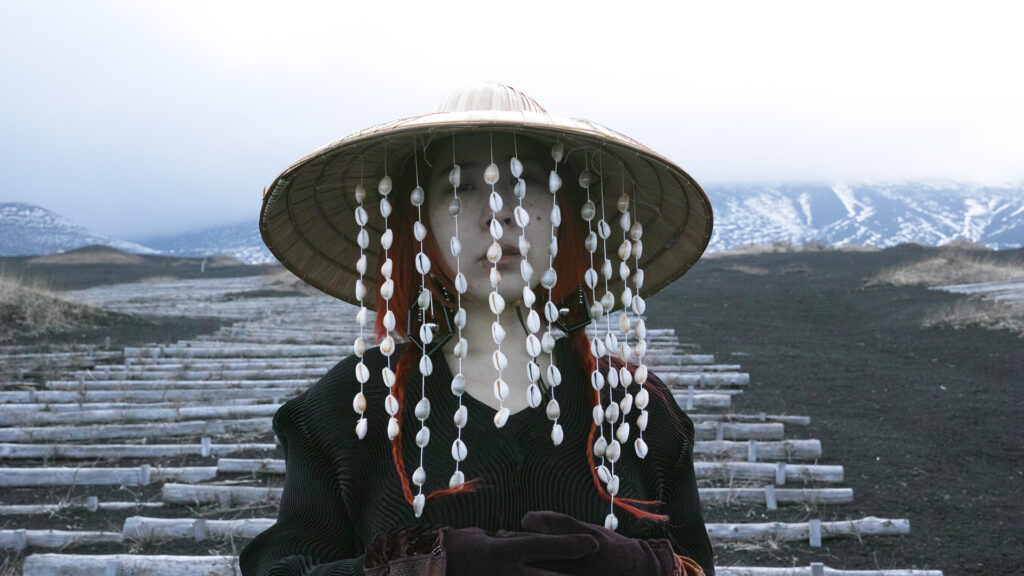
――So, how about nowadays? I heard that you don’t really listen to music anymore.
Kobayashi: When I’m home, there’s almost no sound. You see, music itself contains so much information. Recently, when I was playing mahjong with my friend, my friend asked me, “hey, can we play some music?” I was actually shocked by that [laughs]. If music is played in such moment, I would get distracted, and it would make me hard to focus. Anyway, I guess what I really like is natural sound. The sound of the wind is the best.
――Then, what if someone asks you what kind of music you like?
Kobayashi: I think I like the type of music that I can feel with my body. I love EDM. I started listening to artists like Skrillex quite after they became popular; when I was listening to their music, I thought, “EDM is just like music from the ancient days”: It’s like an insanely primitive music that people were dancing to around a bonfire, now being boosted by electro enabling thousands of people to dace all together.
――In 6 roads, I can also feel the smattering of beats that hit straight to the body.
Kobayashi: That’s true. Though, I made this album in respect of the story, so there also had to be songs that weren’t like that.
――In fact, there’s even a song without any kicks.
Kobayashi: That’s right. I’ve never imagined myself making a song like that, especially because I thought the kicks and bass had to always be there—so, I guess for this album, it was important for me to take away that type of consciousnesses.
――In the meantime, did you find any practical hints for the production?
Kobayashi: The piano concerto, that I was listening to while working on the album, might’ve given me a small hint. It made me realize that “kicks aren’t always necessary.” Also, in classical music, it’s normal to go from minimal to maximum sound and vice-a-versa, like at one part it’s fifty people ringing their instruments all at once, but then it could suddenly shift into a soloist part. I’d say that’s very primitive—but on the other hand, when I’m making electro or band music, I tend to think that I have to keep a consistent sense of hearing. But primarily, that’s not how music should be like, and concerto made me realize that I should do however I want.
The strength of ‘the primitive energy’, and what’s being taken into account for the future
――As I’m hearing your thoughts, I can tell that you care about the primitive senses more than anything.
Kobayashi: I do, indeed. But how should I say? I might be a primitive person myself [laughs].
――When listening to 6 roads, Shamanic images popped into my head.
Kobayashi: I see. I’m in fact interested in Shamanism, and think religion and ethnicity are important. My father has been telling me so, and when he came out to see my show, he left saying something like, “it was great but it was lacking some religious elements” [laughs].
――And how did you take your father’s comment?
Kobayashi: Hmmm. Regarding religious aspects, it’s up to the person’s will of wanting to believe it or not; I think my father was trying to say that my music wasn’t convincing enough. But the thing is that I’m not intending on creating a religious or ethnic based sound.
When you write music, what kind of things do you mainly keep in mind?
Kobayashi: I care about stereoscopy. I’m always conscious of creating a three-dimensional space. Not that I’m trying to create a sound that instantaneously changes the scenery, but I want to create a stereo image like VR. I actually think that listening to music over headphones is a form of digital art.
――I see. Now, what about live shows?
Kobayashi: Live shows are something completely different; especially for people like me who make music digitally, performing live is ridiculously hard. When I perform with other artists as a session musician, I simply need to accurately play the instrument, but with my solo performance, it’s a lot more challenging. First of all, there’s a huge different between the amount of energy used for playing the guitar and playing music on a laptop, and I want to do something about it. That’s why I’ve recently picked up another instrument.
――What instrument is that?
Kobayashi: It’s Celtic harp. I’m being reminded of how the energy used in any musical instruments is consistent, and it’s absolutely different from when making music with a PC. I impulsively bought the harp since I wanted to focus on playing an instrument once again.
――Would you say, you were, again, yearning for a primitive energy?
Kobayashi: Afterall, I guess I was. Because I already know its prominent energy, I just can’t let go of it.
――In the future, what type of music are you thinking about making?
Kobayashi: I want to try on composing a concerto. Maybe like a steel drum concerto. But before that, I want to learn more about the world. I’ve come this far in life without showing interest in anything else besides music, so as a reaction to it, I now diligently look up anything that comes to my attention in my daily life. There’s probably a lot of things I’ve been missing out without even noticing—so first, I need to enrich myself or else I wouldn’t be able to produce ideas—I would need some more time on it, though.
――What are you interested in lately?
Kobayashi: Right now…maybe, physics. A little while ago, When I was hanging out with my friends, and the four of us got into a conversation about ‘double slit experiment’; everyone except me was like, “that’s interesting!”—I was the only one who wasn’t getting it at all [laugh]. It seems like you need to really be smart enough to understand physics, but it’s something that exists in our daily lives, so I’m curious to know. Anyway, I guess that’s the kind of thing I want to talk with my friends now over a cup of tea.
Utena Kobayashi
From Haramura, Nagano. Currently resides in Tokyo. As a composer, she produces incidental music, commercial songs, and remixes. She works with other artists as a backing musician, studio musician, and steel drum player. For her solo project, she writes songs based on the theme: “Ambitious suffering/Laughing and crying at the same time.” In June 2018, she founded a music community label, BINDIVIDUAL. Concurrently, she formed Black Boboi with ermhoi and Julia Shortreed. In June 2019, she launched MIDI Provocateur with Diana Chiaki. She has performed in live shows of D.A.N and KID FRESINO (BAND SET). She is signed to Shuta Hasunuma Philharmonic Orchestra.
https://utenakobayashi.com/
Instagram:@utenakobayashi
Twitter:@utenakobayashi

